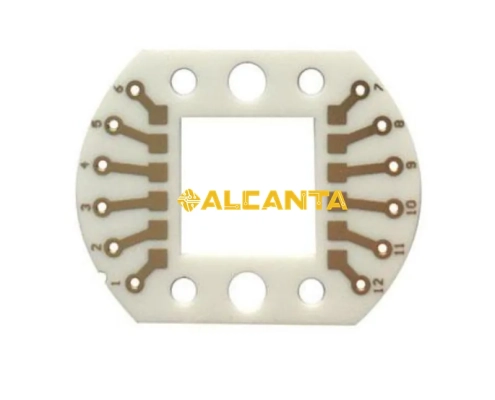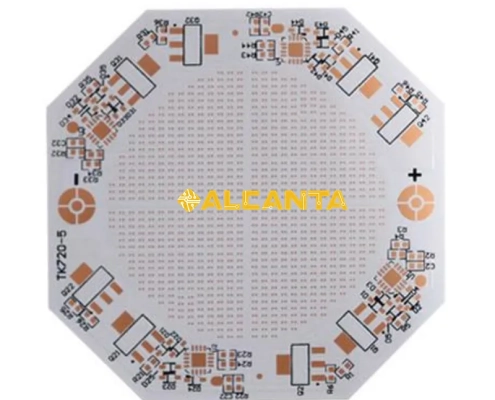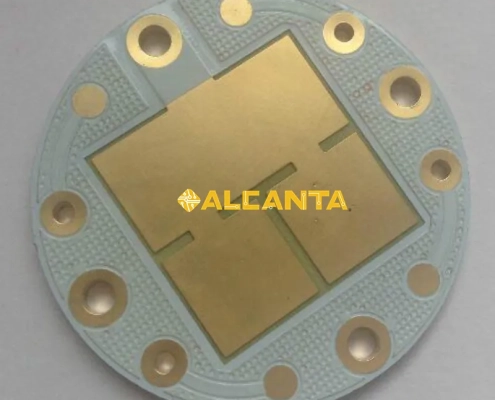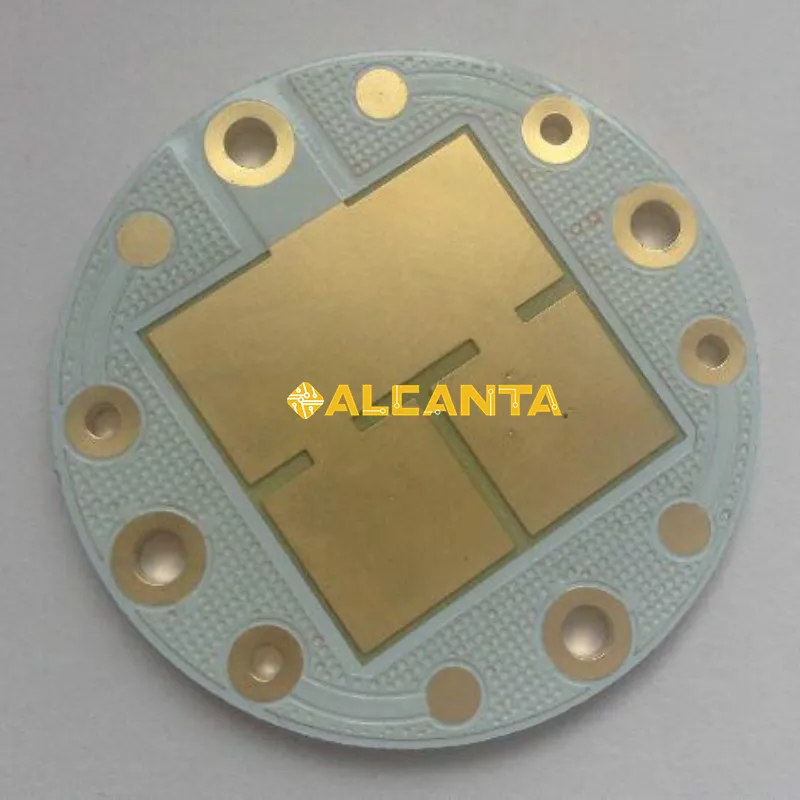Enhancing Connectivity: The Role of Ceramic PCBs
Ceramic PCBs stand at the forefront of advanced electronic technology, revolutionizing the landscape of electronic products. With their exceptional characteristics including high thermal conductivity, superior temperature resistance, and robust mechanical strength, Ceramic PCBs have become integral components across various industries. They find extensive applications in power electronics, automotive electronics, and communication sectors, driving innovation and efficiency in these fields. In this blog, we delve into the intricacies of Ceramic PCBs, exploring their diverse applications and the advantages they offer over traditional FR4 substrates. By understanding the distinctive features and benefits of Ceramic PCBs, we can appreciate their pivotal role in shaping the future of electronic devices and systems.
Applications of Ceramic PCBs
Comparison between Ceramic PCBs and FR4 Substrates
Material Characteristics Comparison
| Characteristic | Ceramic PCBs | FR4 Substrates |
| Thermal Conductivity | High | Moderate to Low |
| Mechanical Strength | High | Moderate |
| High-Temperature Resistance | Excellent | Limited |
| Dielectric Constant | Low | Moderate to High |
| Frequency Stability | Excellent | Moderate |
| Cost | Relatively Higher | Lower |
Ceramic PCBs
- Advantages:
- High thermal conductivity enables efficient heat dissipation.
- Superior mechanical strength ensures reliability in harsh environments.
- Excellent high-temperature resistance allows for operation in demanding conditions.
- Low dielectric constant minimizes signal loss and distortion.
- Excellent frequency stability suits high-frequency applications.
- Disadvantages:
- Relatively higher cost compared to FR4 substrates.
FR4 Substrates
- Advantages:
- Lower cost makes it more economical for mass production.
- Suitable for general-purpose applications.
- Adequate mechanical strength for standard electronic devices.
- Disadvantages:
- Moderate thermal conductivity limits performance in high-power applications.
- Limited high-temperature resistance may cause reliability issues in demanding environments.
- Higher dielectric constant leads to increased signal loss and distortion at high frequencies.
Recommended Ceramic PCB Manufacturers and Products
Introduction to Popular Ceramic PCB Manufacturers
- Rogers Corporation: Rogers Corporation is a renowned manufacturer of advanced materials, including high-performance ceramic substrates. With decades of experience, Rogers offers a wide range of Ceramic PCB solutions tailored for various applications in the automotive, aerospace, and telecommunications industries.
- Kyocera Corporation: Kyocera Corporation is a global leader in ceramic technology, offering high-quality Ceramic PCBs known for their exceptional reliability and performance. Kyocera’s expertise in ceramic materials ensures superior thermal management and electrical properties, making their products ideal for demanding electronic applications.
- CoorsTek, Inc.: CoorsTek is a trusted name in the field of advanced ceramics, providing innovative solutions for electronic applications. Their Ceramic PCBs are engineered to meet the stringent requirements of high-power electronics, offering excellent thermal conductivity, mechanical strength, and reliability.
Recommended Multilayer Ceramic PCB Products
- Rogers RO4003C Series: The RO4003C series from Rogers Corporation comprises high-frequency laminates based on ceramic-filled PTFE (Polytetrafluoroethylene) composites. These multilayer Ceramic PCBs offer low dielectric loss and excellent signal integrity, making them suitable for high-speed digital and RF applications.
- Kyocera Multilayer Ceramic Substrates: Kyocera offers a range of multilayer Ceramic PCBs designed for power electronics and RF/microwave applications. These substrates feature high thermal conductivity, low thermal expansion, and precise dimensional control, ensuring optimal performance in demanding environments.
- CoorsTek HyPax Ceramic Substrates: CoorsTek’s HyPax ceramic substrates are engineered for high-power applications, offering superior thermal management and mechanical reliability. These multilayer Ceramic PCBs provide enhanced thermal conductivity and heat dissipation, making them ideal for power amplifiers, power converters, and LED lighting systems.
By considering products from these reputable manufacturers, you can ensure the reliability, performance, and quality of Ceramic PCBs for your electronic applications.
Price Factors of Ceramic PCBs
FAQs About Ceramic PCB
What is a ceramic PCB?
A ceramic PCB, or ceramic printed circuit board, is a type of substrate used in electronic devices. It is made of a ceramic material such as alumina (aluminum oxide) or aluminum nitride, onto which conductive traces are deposited to create electronic circuits. Ceramic PCBs offer superior thermal conductivity, mechanical strength, and high-temperature resistance compared to traditional substrates like FR4.
What is ceramic board used for?
Ceramic boards are utilized in various electronic applications where high performance and reliability are required. They are commonly used in power electronics, automotive electronics, and communication systems due to their excellent thermal management capabilities, durability in harsh environments, and suitability for high-frequency applications.
What is the difference between ceramic substrate and FR4?
The main differences between ceramic substrates and FR4 (Flame Retardant 4) substrates lie in their material properties and performance characteristics. Ceramic substrates, typically made of materials like alumina or aluminum nitride, offer higher thermal conductivity, mechanical strength, and temperature resistance compared to FR4 substrates. On the other hand, FR4 substrates are made of a fiberglass-reinforced epoxy laminate, offering lower cost and greater flexibility in design. However, FR4 substrates have lower thermal conductivity and temperature resistance compared to ceramic substrates, making them less suitable for high-power or high-temperature applications.
What is the thermal conductivity of ceramic PCB?




